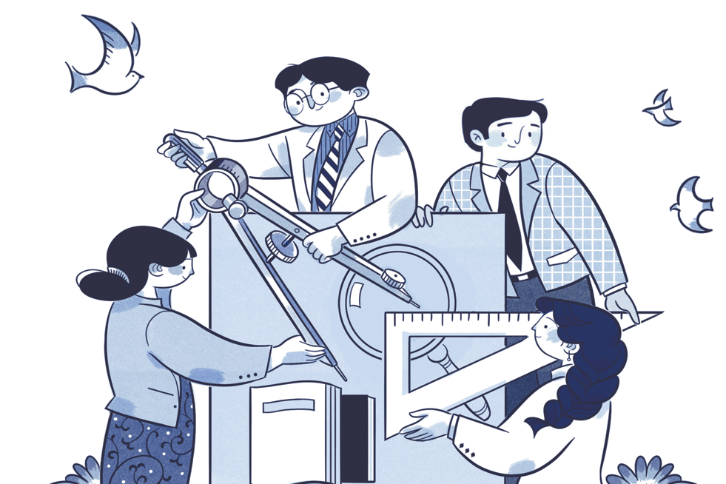Easing restrictions builds on past success


China released a 10-point plan on Dec 7 to further relax pandemic prevention and control measures following the announcement of rules on Nov 11 to optimize the anti-pandemic measures.
The latest move was expected. On the fourth day of my quarantine as a close contact in a hotel in mid-November, a hotel employee called me on the phone to say I could leave the next day because a new government policy had reduced quarantine time by two days. I realized then that major relaxations of COVID-19 restrictions were on the way.
Over the past three years or so, China has protected the lives and health of its citizens well. According to the World Health Organization, the United States reported 98.07 million confirmed COVID-19 cases and 1,074,367 deaths from Jan 3, 2020, to Dec 12, 2022, whereas China recorded 9.92 million confirmed cases and 30,879 deaths.
Had China not implemented the strict anti-pandemic measures, it would have had 425 million cases and 4.70 million deaths, given that its population is four and a half times that of the US. In other words, China's anti-pandemic policy has saved more than 4 million lives. Indeed, thanks to its strict anti-pandemic policy China has overtaken the US in terms of life expectancy.
Also, the Chinese economy has shown remarkable resilience, as it expanded by 14.3 percent in the last three years — an average 4.5 percent a year. Although weak by its own standards, China's growth compares favorably with the US' 4.7 percent — just above 1.5 percent a year — or the European Union's 2.8 percent over the past three years. Better still, the Chinese economy is expected to grow faster than the US' and the EU's in 2023.
However, the novel coronavirus has been constantly mutating and has become more infectious. The dominant sub variants of the virus in China — BA.4, and BA.5-spread easily, with R0 as high as 22, meaning an infection can infect up to 22 persons. But they are less likely to cause serious illness. For example, very few of the 160,000 infections in the southern Chinese city of Guangzhou, one of the epicenters of the current wave of infections, have turned serious. Nationwide, prior to the spread of the Omicron variant, the death rate was relatively high. But since September, more than 99 percent of the infections in Guangzhou and Chengdu, Sichuan province, have been mild cases. As for the death rate, it dropped to 0.1 percent, similar to that of common flu.
The government realized that given the nature of the virus's subvariants, it would be almost impossible to completely break the transmission chains. It was time for a new strategy.
Besides, the excessively strict measures in some places added to the misery of many small and micro businesses. The gym I visit regularly was forced to shut down for nearly half of this year. While the closure caused me inconvenience, it made it difficult for the gym's employees to make ends meet. If the virus no longer poses a serious threat to life in most cases, it is natural to ease the restrictions to safeguard people's livelihoods.
That the strict measures have impacted economic growth can be gauged from the fact the Chinese economy is forecast to grow by just about 3 percent this year when the government had set the GDP growth rate at 5.5 percent at the beginning of 2022. Apparently, the benefit of easing controls outweighs its cost.
Furthermore, China's healthcare system has vastly improved, and the country has enough stocks of COVID-19 vaccines and medicines needed to treat coronavirus patients. What's more, China is among the countries with the highest vaccination rate — more than 90 percent. This means China is prepared to counter the onslaught when it finally reopens.
Adjusting its response to new realities has been the hallmark of China as it constantly reviewed the situation on the ground, and made adjustments accordingly.
For instance, China's emphasis has shifted from strict screening and quarantine to cut off the transmission chains and saving every single life at all cost at the beginning of the pandemic to better balancing economic growth and pandemic control. In the process, China's health authorities have continually modified and optimized their COVID-19 control and treatment guidelines, with the ninth version issued on Nov 11.
Consequently, the wide-ranging relaxations announced on Dec 7 were widely anticipated and applauded in the country, while making those in the West who claimed Chinese leaders were politicizing pandemic prevention and control look like fools.
The measures allow those infected with the virus to quarantine at home, and eliminate the need for people to show a negative test result (and/or a green health code) to enter most public places. The focus is now on preventing and treating serious cases rather than completely cutting off the transmission chains.
In line with the government's commitment to prioritizing lives mask-wearing is still mandatory in public places while PCR tests are required to enter places such as schools, eldercare homes and in-door recreational centers.
Based on the experience of the Hong Kong Special Administrative Region, some claim that if the Chinese mainland fully reopens in the first half of 2023, it could see hundreds of thousands of deaths. In all probability, this would not happen. About 66 percent of the people aged 80 or above on the mainland have been fully vaccinated compared with just 20 percent of the same age group in Hong Kong when the SAR encountered a fresh wave of infections earlier this year. In addition, the central government is going all out to vaccinate all senior citizens.
Despite all this, China's journey to normality is unlikely to be smooth, as the number of infections could still be large, with significant number of serious cases and deaths, given the size of its population.
Will Western-made vaccines help China's fight against the virus? Just the other day, my wife and I were talking about the claim that mRNA(activated) vaccines made by Pfizer and Moderna are superior to Chinese inactivated vaccines. I was hard pressed to respond when she asked: why China has fewer COVID-19-related deaths in the past six months than the US has in a single day if the US vaccines are more effective?
China has triumphed in the fight against COVID-19. As the last country in the world to lift strict restrictions, it has the added benefit of drawing on the experiences of other countries in reopening. In living with the virus, China looks to continue its success.
The author is former deputy permanent representative of China's Mission to the UN Office in Geneva and a senior fellow at the Center for China and Globalization.
The views don't necessarily reflect those of China Daily.
If you have a specific expertise, or would like to share your thought about our stories, then send us your writings at opinion@chinadaily.com.cn, and comment@chinadaily.com.cn.


































